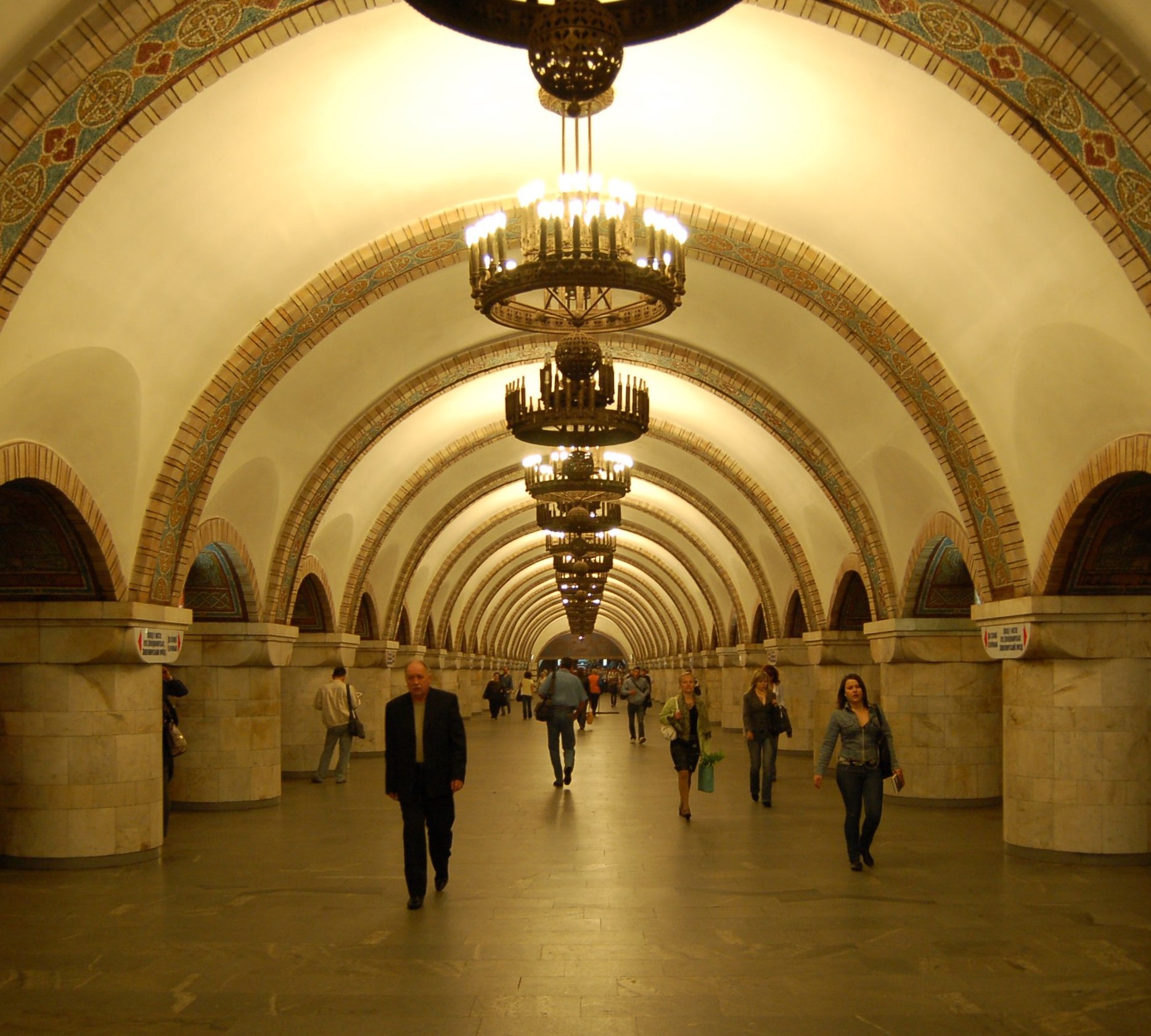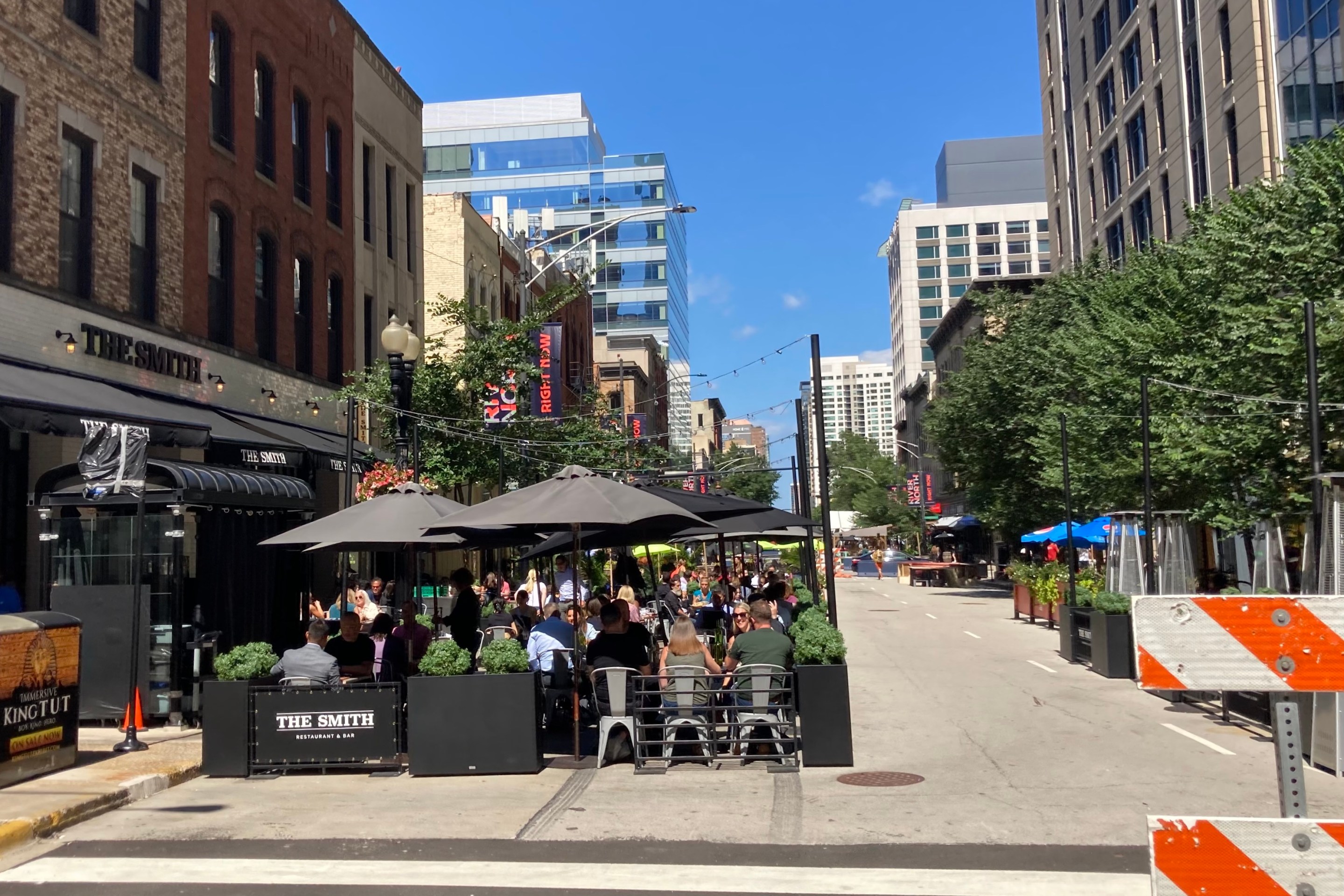After Igor Studenkov filed this piece, this morning he provided this update: "I can't find any updates on websites or social media, but given that Kharkiv is being bombarded, I doubt the subway is running."
As the Russian invasion of Ukraine unfolds at rapid pace, public transportation continues to play a role on both sides of the border.
As a native of St. Petersburg, the Russian Federation’s second-largest city and President Vladimir Putin’s hometown, I have been glued to the English language and Russian language news feeds since news of the invasion first broke on Wednesday evening Chicago time (early Thursday morning Kyiv time). I don’t have any relatives in Ukraine, or on the front lines, but as a Russian, it’s impossible not to be affected – especially when you can look at Russian-language sources a lot of your fellow reporters lack. There are so many things I can talk about – but, since this is Streetsblog Chicago, I’m going to talk about transit.
Subways as Bomb Shelters
Subway systems in major Soviet cities were usually designed to double as bomb shelters. Moscow Metro, USSR’s very first subway system, famously served as bomb shelter during World War II. Growing up in St. Petersburg, I learned as a kid that St. Petersburg Metro, the second-deepest subway system in the world, could withstand a nuclear strike. My grandma used to point at the heavy metal doors right where the escalators ended, and talked about how thick they were.
Kyiv, which at just under three million people has roughly the same population as Chicago, was the third city in the Soviet Union to get a subway system, after Moscow and St. Petersburg. The city was devastated by Nazi bombings during World War II, which, ironically, made planning the subway somewhat easier. The subway has 54 station, 46 of which are underground. Twenty of them are “deep” stations – that is, more than 20 meters underground. The deepest station, Arsenala station, is 105.5 meters, or 346 feet, deep, making it the deepest station in the world. Twenty-six stations are considered “shallow,” less than 20 meters deep.
Kharkiv Metro, the sixth subway ever built in the USSR and the second in modern-day Ukraine, has six deep stations and 24 shallow stations.
The only other subway system currently operating in Ukraine is Dnipro Metro. While the planning goes back to the Soviet era, it was the first subway to be built in an independent Ukraine. While it only has six stations, five of those stations are deep.
On Wednesday evening, I saw an article on Fontanka, a St. Petersburg based independent online media outlet, that mentioned that Kyiv and Kharkiv subways were waiving fares so that residents could use them as bomb shelters While Fontanka is usually a trustworthy source, the 2014 Ukrainian crisis made me leery of a publication that relies solely on personal accounts. I was able to find confirmation on Kyiv Metro’s social media feed, which tweeted out on February 24 at 12:34 a.m. (7:34 p.m. Kyiv time) that, yes, the fares were suspended “pending further orders from the city government,” and saying that the 46 underground stations were available for use as bomb shelters 24/7, while the service would operate as normal. I wasn’t able to confirm the Kharkiv accounts that evening, but by the time I woke up in the morning, there were plenty of photos confirming it.
Crowds subsequently headed out to Sadovaya Street, and a small group rallied in front of St. Issacs' Cathedral. In the end, around 1,000 people took to the street. At least 319 people were detained, with 94 people charged as of Friday night (St. Petersburg time). 34 people were officially arrested, 97 people were fined, two got sentenced to community service, and the rest of the cases are still pending.
On Friday, another protest assembled in front of Gostiny Dvor. I was able to follow the livetweets from a reporter for Bumaga (a major alt-weekly-style St. Petersburg online media outlet). At around 8:40 p.m. local time (11:40 a.m. Chicago time), around 1,000 people took part. Around 150 people were detained, including a mother with a 1.5 year old child who carried a fairly simple peace sign). The video I've seen doesn't show much, but there are accounts of protesters getting slammed against the wall, protesters who lay down on the ground getting clubbed in the legs, and one of the protesters loaded in a commandeered bus getting punched in the stomach, This time, the city shut down the Gostiny Dvor station, as well as the transfer connections to Nevsky Prospekt.
In Moscow, around 2,000 protesters rallied at Pushkin Square in the city's central area. While that protest, too, was suppressed, it reportedly caught law enforcement by surprise. But when the protesters attempted to repeat it on Friday, the police not only sealed off the square, but posted officers at the nearby Tverskaya station. According to the Village news site, at first they simply checked IDs, but then they started detaining anyone who stepped out of the station. The exact figures weren’t available as I'm writing this.
A few bits about intercity rail
Once the attacks began, the airspace over Ukraine was closed to civilian planes, and Russia closed airports serving several nearby cities on its side of the border, including in annexed Crimea. According to Kommersant FM93.6, a radio station operated by Kommersant, Russia's biggest business daily newspaper (think Wall Street Journal), this sent people scrambling to get train tickets. While the Russian transportation system feels like it's undergoing many of the same processes as the U.S. went through in the 1950s in terms of a shift towards car-dependency, it still retains a more developed intercity rail network than United States. Last I heard on Friday evening (Moscow time), Russian Railways, a state-owned company that operates all intercity freight and passenger rail service, is sending more trains to meet the sudden spike in demand. (The company’s site, incidentally, seems to be under what looks like a DDoS attack as I’m writing this)
Meanwhile, Ukrainian Railways, that country’s Russian Railways counterpart, has been doing its best to continue to maintain regular operations, even as thousands of people are fleeing the country and the military tries to move troops.
The situation is changing by the hour, I have no idea how much of this is going to be relevant tomorrow. But I think of all of the journalists in Ukraine and Russia, who are braving threats of bombings and police beatings, respectively, to bring all the news here. I couldn’t have shared any of this without them. Sitting here, an ocean away, one feels helpless. But I hope to do the bare minimum I can, as a Russian speaker, to help spread the word.
Держитесь, ребята. (Roughly, "Hang in there, folks.")




